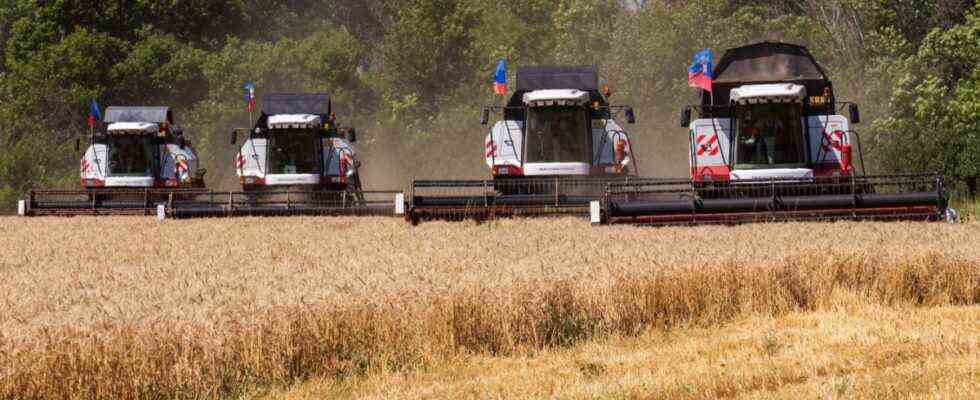A region in the Soviet Union that could be used for agriculture was called the Agrarian Triangle. The three million square kilometer area stretched between Saint Petersburg, Odessa and Irkutsk. Huge amounts of grain were grown here, but also sugar beets, corn and sunflowers. The most productive soils within this zone – known for their fertile black soil – were in the European part, in the Ukraine. This granary has long been feeding parts of the Middle East and East Africa, countries characterized by instability and food shortages.
Now there is war in Ukraine. Production losses caused by the Russian attack, damage to ports and various sanctions are likely to lead to a decline in exports. World market prices are already rising and concerns about the food supply in Africa and Asia are growing. Hunger will increase.
The price of wheat had risen by almost 30 percent last year, and according to analysts there could be another 30 percent. Russia and Ukraine account for about a third of global wheat exports, and even 80 percent for sunflower seeds. Ukraine alone shipped about 33 million tons of the grain in 2021. In the future, these exports will probably collapse dramatically.
“It’s one disaster that comes after another,” says David Beasley, director of the World Food Program (WFP). The UN organization obtains 50 percent of its grain from Ukraine. Even before the war, this had become so expensive that food rations in Yemen had to be cut in half. Civil war has been raging in the Arab country since 2015, and large sections of the population have been affected by malnutrition for years. “Just when you think it can’t get any worse, it gets worse,” Beasley said.
“There is no substitute for bread.”
“The Russia-Ukraine conflict is worrying, especially for the East African region, which is also experiencing drought and grain imports,” said Wandile Sihlobo, an agricultural expert at Stellenbosch University in South Africa. Food prices in Africa have already risen sharply over the past two years due to global droughts and increasing demand from China and India. The situation is exacerbated by rising energy costs and the fact that artificial fertilizers are also becoming more and more expensive. Russia is the world’s second largest producer of such substances, and natural gas is an important raw material for this.
In the Mediterranean, Lebanon in particular is likely to suffer from higher wheat prices. The crisis state, which has been in the grip of a devastating economic crisis since 2019, sourced up to 95 percent of its grain purchases from the Black Sea region between 2010 and 2019. Russian and Ukrainian shortfalls could be offset if Romania and Kazakhstan increase their share, says Ahmad Hoteit, President of the Müller Society. But if the entire region were affected, the wheat would have to be brought in from Argentina or the USA. “But the transport takes 25 days because of the distance,” says Hoteit. Lebanese agricultural scientist Riad Saade doesn’t expect his country’s government to do anything: “They’re probably not even aware of the problem.” Wheat shortages are even worse than fuel or electricity shortages, which the Lebanese have already had to get used to. “There is no substitute for bread,” says Saade, “that’s what poor people eat, the only thing they can afford.”
The dependence of the countries in the region on wheat has grown historically, explains Alex Smith of the Breakthrough Institute in Oakland (California): “Once a lot of it was grown locally, for example in Syria before the war.” One should now also worry about Egypt, according to Smith: “The country also obtains more than 50 percent of its wheat from Russia and Ukraine.” A planned tender for the import of large quantities of the grain has just had to be cancelled. The stability of the largest Arab country (105 million inhabitants) is based on these imports. The government has been using it to produce subsidized bread for decades. When President Anwar al-Sadat cut subsidies in 1977, unrest broke out – he rowed back. When the Egyptians marched onto Tahrir Square in their 2011 revolution, they demanded “bread, freedom and social justice”. Only the desire for cheap baked goods has been fulfilled. The question now is how long it will stay that way.

